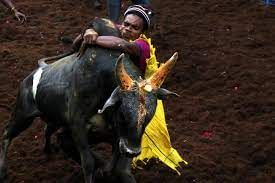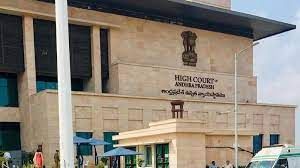UPSC Daily Current Affairs- 19th May 2023 | Current Affairs & Hindu Analysis: Daily, Weekly & Monthly PDF Download
GS-I
Pir Panjal valley
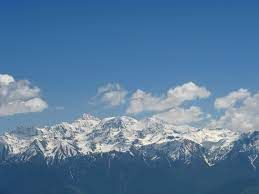
Why in News?
Militant activity has claimed more casualties in the Pir Panjal valley than in the Kashmir valley this year.
About
- Militants are changing tack in the Pir Panjal valley to outsmart the security agencies and survive longer in a region with topography as tough as Afghanistan’s mountains.
- The valley comprises the twin districts of Rajouri and Poonch, and includes 225 km of the Line of Control (LoC) with Pakistan Occupied Kashmir (PoK).
- The questioning of residents living in and around has thrown a light on the new modus operandi used by militants after infiltrating into the jungles of the Pir Panjal valley.
- It is not just the spike in militant activities in Rajouri-Poonch that is a cause of concern among security agencies, but also the change in strategy, the use of “smarter” sleeper cells, the impenetrable means of communication, the use of technology, and the high level of training that militants are being given to fight and survive in hostile forests.
Pir Panjal valley
- The Pir Panjal is a sub-Range of Himalayas and it runs from the Neelam River in J&K all the way to the Beas River in Kullu in Himachal Pradesh extending into Pakistan.
- Near the bank of the Satluj river, it dissociates itself from the Himalayas and forms a divide between the rivers Beas and Ravi on one side and the Chenab on the other.
- On the eastern side of Pir Panjal range is the famous Rohtang pass which connects two districts of Himachal Pradesh namely Kullu & Lahaul and Spiti.
- This pass is a gateway for the people of Lahaul Valley who wants to go to Kullu or other parts of Himachal.
- Easternmost and highest point of this range is Mt. Indrasan is located in Manali, Kullu, Himachal Pradesh.
- Highest Pass in Pir Panjal range is Kugti Pass which connects Bharmour area of Chamba to Lahaul Valley of Lahaul-Spiti district, Himachal Pradesh.
Source: The Hindu
SC backs TN position on Jallikattu
Why in News?
The Supreme Court Constitution Bench has upheld the amendments made by Tamil Nadu, Maharashtra, and Karnataka to the Prevention of Cruelty to Animals Act, 1960.
- The decision overturns a previous verdict that banned practices such as Jallikattu, a traditional bull-taming sport.
Overturning the previous verdict
- The court rejected the 2014 verdict of the Welfare Board of India v. A. Nagaraja case that deemed Jallikattu incompatible with animal rights.
- The Constitution Bench emphasized that Jallikattu has been a part of Tamil Nadu’s cultural heritage for at least a century.
Significance of Pongal and Jallikattu
- Pongal is a harvest festival in Tamil Nadu, celebrated with thanksgiving for a bountiful harvest and rituals honoring cattle.
- Jallikattu, a bull-taming event, is an integral part of the festival and showcases the strength and skill of farm hands in southern Tamil Nadu.
Supreme Court’s 2014 verdict and animal rights perspective
- The previous two-judge Bench ruling emphasized the importance of animal rights and suggested elevating them to the level of constitutional rights.
- Animal welfare organizations presented evidence of physical and mental torture inflicted on the animals during Jallikattu.
Issue with the sport
An investigation by the Animal Welfare Board of India concluded that “Jallikattu is inherently cruel to animals”.
- Human deaths: The event has caused several human deaths and injuries and there are several instances of fatalities to the bulls.
- Manhandling of animals: Animal welfare concerns are related to the handling of the bulls before they are released and also during the competitor’s attempts to subdue the bull.
- Cruelty to animal: Practices, before the bull is released, include prodding the bull with sharp sticks or scythes, extreme bending of the tail which can fracture the vertebrae, and biting of the bull’s tail.
- Animal intoxication: There are also reports of the bulls being forced to drink alcohol to disorient them, or chilli peppers being rubbed in their eyes to aggravate the bull.
Arguments in favour
- Native breed conservation: According to its protagonists, it is not a leisure sport available but a way to promote and preserve the native livestock.
- Cultural significance: Jallikattu has been known to be practiced during the Tamil classical period (400-100 BCE) and finds mention in Sangam texts.
- Man-animal relationship: Some believe that the sport also symbolizes a cordial man-animal relationship.
- Agrarian pride: It represents a cultural infirmity to urban modernity that marginalizes rural and agrarian values.
Conclusion
- Tradition and culture should be considered in the rights discourse, recognizing the cultural context of practices like Jallikattu.
- Engagement and negotiation between animal rights advocates and local culture and tradition are necessary for a balanced approach.
Source: Indian Express
GS-II
Elections and the airwaves
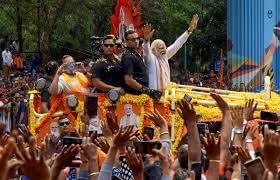
Why in News?
In the recently-concluded Karnataka Assembly elections, political parties were provided free airtime on public broadcasters, All India Radio (Akashvani) and Doordarshan during elections.
Rationale behind the scheme
- Airwaves are public property
- The Supreme Court, in 1995, held that airwaves are public property and its use should serve the greater public good.
- SC delivered this judgement in The Secretary, Ministry of Information and Broadcasting vs Cricket Association of Bengal and ANR case 1995.
- Elections are the lifeblood of a democracy. Hence, political parties are given free airtime.
- The Supreme Court, in 1995, held that airwaves are public property and its use should serve the greater public good.
- To ensure fair and equitable coverage of political campaigns
- The concept of providing free airtime is based on the principle of giving every party an equal platform to present their policies, ideas, and vision to the electorate.
- It helps to level the playing field and prevent any party from dominating the media landscape due to its financial resources or influence.
- To add more diversity and colour to the electoral process
- In the Indian media landscape, due to the pattern of ownership of media houses, the public generally identify a broadcaster as being affiliated with one political party or the other.
- In this regard, State-sponsored airtime provides more diversity and colour to the electoral process.
- E.g., - The guidelines by the Election Commission of India require that a maximum of two panel discussions are also aired by Akashvani and DD.
- These discussions provide an excellent platform for parties, both big and small, to debate and criticise each other’s policies and manifestos, and in general promote an informed citizenry.
Legal basis of this scheme
- Representation of People Act, 1951
- The facility to provide free airtime for political parties during elections was given statutory basis through the 2003 amendment to the Representation of People Act, 1951.
- The act governs the conduct of elections in India and lays down various provisions to ensure fairness and equality among political parties.
- The facility to provide free airtime for political parties during elections was given statutory basis through the 2003 amendment to the Representation of People Act, 1951.
- Institution involved
- The Election Commission of India (ECI), is responsible for enforcing the provisions of the Representation of the People Act, 1951.
- The ECI, in its capacity, has issued guidelines and instructions that provide a framework for the allocation of free airtime to political parties on public broadcasters during the campaign period.
- These guidelines and instructions outline the criteria for determining the eligibility and allocation of free airtime to political parties.
- Factors such as past electoral performance, representation in the legislature, and the number of candidates fielded by the party are considered to ensure equitable distribution of airtime.
Working of the scheme
- Distribution of time vouchers
- Time vouchers are distributed by a lottery system by the Election Commission in a transparent process to obviate any preferential treatment in getting primetime slots.
- Scrutiny of transcripts of political parties
- The transcripts of political parties are vetted to ensure that they adhere to relevant codes.
- These codes proscribe any content which are inter alia critical of other countries, attack religions or other communities or incites violence and personal attacks.
- Role of Apex Committee
- In case of any disagreements over the content of the script as vetted by the public broadcaster, it is referred to an Apex Committee.
- The committee comprises of members from Akashvani and DD. The decision of the committee is final.
Operational challenges
- Scheme is available to national and recognised State parties
- The scheme is available to national and recognised State parties. Hence, many analysts argue that it is not truly equitable.
- In light of the recent retraction of the national party status for the Nationalist People’s Coalition (NPC) and the Trinamool Congress (TMC), this observation becomes important.
- Conflict of interest in apex committee
- The Apex Committee comprises officials from Akashvani and DD.
- They are expected to sit in review of their own decision in case of conflict with the political party on the content of the transcript which leaves scope for conflict of interest.
Source: The Hindu
Rasht-Astara Railway
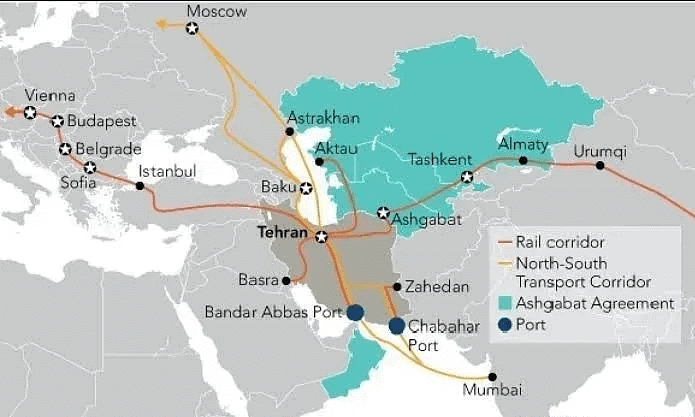
Why in News?
The Russian President and his Iranian counterpart signed a deal to finance and build an Iranian railway line as part of an embryonic international North–South Transport Corridor.
About Rasht-Astara railway
- It is seen as an important link in the corridor, intended to connect India, Iran, Russia, Azerbaijan, and other countries via railways and sea — a route that Russia says can rival the Suez Canal as a major global trade route.
- Significance
- The 162 km railway along the Caspian Sea coast would help to connect Russian ports on the Baltic Sea with Iranian ports in the Indian Ocean and the Gulf.
- It is an important and strategic step in the direction of cooperation between Tehran and Moscow.
- It will help to significantly diversify global traffic flows.
The Suez Canal
- It is an artificial sea-level waterway running north to south across the Isthmus of Suez in Egypt to connect the Mediterranean Sea and the Red Sea.
- The canal separates the African continent from Asia, and it provides the shortest maritime route between Europe and the lands lying around the Indian and Western Pacific oceans.
- It is one of the world's most heavily used shipping lanes.??
- It is one of the most important waterways in the world.
The International North-South Transport Corridor (INSTC)
- It is a multi-modal transportation route linking the Indian Ocean and the Persian Gulf to the Caspian Sea via Iran and onward to northern Europe via St. Petersburg in Russia.
- INSTC is India’s vision and initiative to reduce the time taken for EXIM shipments to reach Russia, and Europe and enter the central Asian markets.
Do you know?
- Since the 1979 Islamic Revolution that swept U.S.-backed Shah Mohammad Reza Pahlavi from power, Iran has been ostracised by the West, and its economy is crippled by a myriad of sanctions. It holds around a quarter of the Middle East's oil reserves.
- The West also imposed other sets of restrictions on Iran's nuclear program, while Russia was sanctioned due to its actions in Ukraine.
Source: The Hindu
Freedom of Speech the ‘Bulwark’ of Democracy: Andhra HC
Why in News?
The Andhra Pradesh High Court has overturned a Government Order (GO) issued by the state government that aimed to regulate public meetings, processions, and assemblies on roads.
Key takeaways of the ruling
- The court held that the right to assemble, protest peacefully, and express one’s opinion freely was a precious freedom.
- It emphasized that this freedom should not be curtailed based on unproven assertions made by government officials.
- The court reiterated that freedom of speech was considered the foremost among liberties and was crucial for democracy.
- It stated that such a precious freedom should not be left to the unrestricted discretion of any individual.
AP move regulating Public Assembly
- The GO sought to regulate public meetings and assemblies on roads, roadsides, and margins.
- The state government argued that the regulations were necessary to address fatal accidents and ensure smooth traffic flow.
- Sections 30, 30A, and 31 of the Police Act, 1861 were cited as the basis for the directions under the GO.
High Court’s decision and reasoning
- The court set aside the GO, ruling that it imposed a ban on all meetings on public highways and roads.
- It stated that accidents or incidents at specific locations should not result in a total restriction on the right to assemble or conduct processions on other roads.
- The court suggested studying the causes of incidents and issuing guidelines to prevent their recurrence rather than imposing broad restrictions.
Upholding the Right to Assembly
- The court asserted that the right to assemble, protest peacefully, and express opinions freely is a fundamental freedom that cannot be curtailed arbitrarily.
- Freedom of speech is regarded as a crucial pillar of democracy and must not be subject to unfettered discretion.
- The court deemed the power conferred by the GO as excessive, arbitrary, and failing the test of proportionality.
Reference: 2018 SC Ruling on Peaceful Assembly
- The court referred to the guidelines laid down in the Supreme Court’s ruling in “Mazdoor Kisan Shakti Sangathan v Union of India (2018).”
- The guidelines regulate protests and demonstrations, recognizing the right to peaceful assembly while allowing reasonable restrictions.
- The ruling includes provisions on the number of participants, minimum distances from important locations, and restrictions during visits by foreign dignitaries.
Right to Assemble
- The right to assemble in India refers to the fundamental right guaranteed under Article 19(1)(b) of the Constitution of India.
- It grants individuals the freedom to peacefully assemble, protest, and hold public meetings or processions.
- This right allows citizens to come together to express their views, opinions, and grievances collectively in a public setting.
- It is an essential aspect of democracy, enabling citizens to engage in peaceful activism, raise awareness about social issues, and participate in public discourse.
- However, reasonable restrictions can be imposed on this right in the interest of public order, morality, and the sovereignty and integrity of India.
Source: Indian Express
GS-III
Green deposit: What are RBI regulations on green deposit?
Why in News?
Recently, the Reserve Bank of India (RBI) came up with a regulatory framework for banks to accept green deposits from customers.
- Under the new framework, banks that accept green deposits will have to disclose more information on how they invest these deposits.
What are Green Deposits?
- Green deposits are not very different from the regular deposits that banks accept from their customers.
- The only major difference is that banks promise to earmark the money that they receive as green deposits towards environment-friendly projects.
- For example, a bank may promise that green deposits will be used towards financing renewable energy projects that fight climate change.
- A green deposit is just one product in a wide array of other financial products such as green bonds, green shares, etc., that help investors put money into environmentally sustainable projects.
The RBI’s Regulatory Framework for Green Deposits:
- It lays down certain conditions that banks must fulfill to accept green deposits from customers.
- Firstly, banks will have to come up with a set of rules or policies approved by their respective Boards that need to be followed while investing green deposits from customers.
- These rules need to be made public on the banks’ websites.
- The banks will also have to disclose regular information about the
- Amount of green deposits received,
- How these deposits were allocated towards various green projects, and
- The impact of such investments on the environment.
- A third party will have to verify the claims made by banks regarding the projects in which the banks invest their green deposits.
- The RBI has come up with a list of sectors that can be classified as sustainable and thus eligible to receive green deposits.
- These include renewable energy, waste management, clean transportation, energy efficiency, and afforestation.
- The new rules are aimed at preventing greenwashing, which refers to making misleading claims about the positive environmental impact of an activity.
- For example, a bank may advertise that their green deposits will have a huge positive impact on the environment, while the actual impact may be minimal.
Will Green Deposits help Depositors/Investors and the Environment?
- Depositors who care about the environment may get some satisfaction from investing their money in environmentally sustainable investment products.
- However, there are challenges, since the bank is only able to invest in a certain number of projects with green funds.
- When it comes to protecting the environment, green investing enthusiasts believe that putting money into green projects may be one of the best ways to help the environment.
- However, critics call green investing “a feel-good scam” that enriches only consultants.
- In a complex world, it can be extremely hard to know if a project is really environmentally sustainable.
Source: The Hindu
Credit cards put under Liberalised Remittance Scheme (LRS)
The Centre has amended rules under Foreign Exchange Management Act (FEMA) Rules, bringing international credit card spends under the Liberalised Remittance Scheme (LRS).
Changes introduced
- Credit card spends outside India now fall under the LRS, allowing for the application of a higher TCS rate.
- The amendment removes the exclusion of credit card transactions from the LRS, which was previously covered under Rule 7 of the Foreign Exchange Management (Current Account Transaction) Rules, 2000.
- The changes do not apply to payments for the purchase of foreign goods/services from India.
What is Liberalised Remittance Scheme (LRS)?
- LRS is a facility provided by the Reserve Bank of India (RBI) to resident individuals to remit funds abroad for permitted current or capital account transactions or a combination of both.
- The scheme was introduced in 2004 and has been periodically reviewed and revised by the RBI.
- Under the scheme, resident individuals can remit up to a certain amount in a financial year for permissible transactions including education, travel, medical treatment, gifts, and investments in equity and debt securities, among others.
- The limit for LRS is currently set at USD 250,000 per financial year.
Eligibility for LRS
- LRS is open to everyone including non-residents, NRIs, persons of Indian origin (PIOs), foreign citizens with PIO status and foreign nationals of Indian origin.
- The Scheme is NOT available to corporations, partnership firms, Hindu Undivided Family (HUF), Trusts etc.
Benefits provided by LRS
- LRS is an easy process that anyone can use to transfer money between two countries.
- It’s especially useful for businesses because they can use it to transfer funds to India, and investors can receive their investments back home.
- LRS also has some added benefits, like fast transfer timing and no issues with exchange rates.
Concerns with credit card spends
- The amendment aims to achieve parity between the usage of credit and debit cards, which were already covered under the LRS.
- Instances of disproportionately high LRS payments compared to disclose incomes prompted the amendment.
- Business visits of employees, where costs are borne by the employer, are not covered under the LRS.
- The data collected from major money remitters under the LRS indicated that international credit cards were being issued with limits exceeding the prescribed norm.
Exclusions and impact of the Scheme
- The government assured that the LRS scheme would not cover genuine business visits abroad by employees.
- The imposition of a 20% tax collection on source (TCS) for foreign remittances would primarily affect tour travel packages, gifts to non-residents, and domestic high net-worth individuals investing in assets like real estate, bonds, and stocks outside India.
- The Ministry emphasized that the 5% TCS levied on medical or education expenses abroad, allowed up to ₹7 lakh per year, and would remain unchanged.
Source: Live Mint
Fertilizer Subsidy
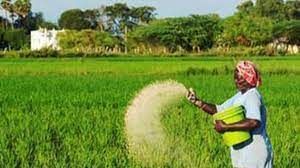
Why in News?
The Union Cabinet approved a Rs. 1.08 lakh crore subsidy for the ongoing kharif or monsoon season.
About
- Out of this, Rs. 38,000 crore will subsidise phosphatic and potassic (P&K) fertilizers, while Rs. 70,000 crore will go toward the urea subsidy.
- With fertilizer prices continuing to remain high due to global factors — such as a fall in production and hiked logistics costs, especially due to the Ukraine situation — the Centre expects this year’s fertilizer subsidy to cross Rs. 2.25 lakh crore. Last year, the total fertilizer subsidy was about Rs. 2.56 lakh crore.
Fertilizer Subsidy Schemes
- The Department of Fertilizers implements different fertilizer subsidy schemes with different subsidy components from time to time to ensure timely and easy availability of different fertilizers at affordable prices.
- At present, (i) Urea ; (ii) 21-grades of P&K-fertilizers & (iii) City Compost are covered under the subsidy schemes implemented by the Department of Fertilizers.
Urea Subsidy:
- The urea is sold at a Maximum Retail Price (MRP) statutorily fixed by the Government of India.
- The difference between delivery cost of urea at farm gate and net market realization by the urea units is given as a subsidy to the urea manufacturer / importer by the Government of India.
Nutrient Based Subsidy (NBS):
- The Nutrient Based Subsidy (NBS) Policy for P&K fertilizers has been implemented since 2010 by the Department of Fertilizers.
- Under the NBS Policy, the Government provides a fixed rate of subsidy (in Rs. Per Kg basis) on each nutrient of subsidized P&K fertilizers. MRP of P&K fertilizers has been left open and fertilizer manufacturers / marketers are allowed to fix the MRP at reasonable rates.
Promotion of City Compost:
- The Department of Fertilizers notified the scheme for promotion of City Compost in 2016.
- Under the scheme, Market Development Assistance (MDA) in the form of a fixed amount of Rs.1500/- per MT of City Compost will be provided for scaling up production and consumption of the product.
Source: The Hindu
|
38 videos|5293 docs|1118 tests
|


